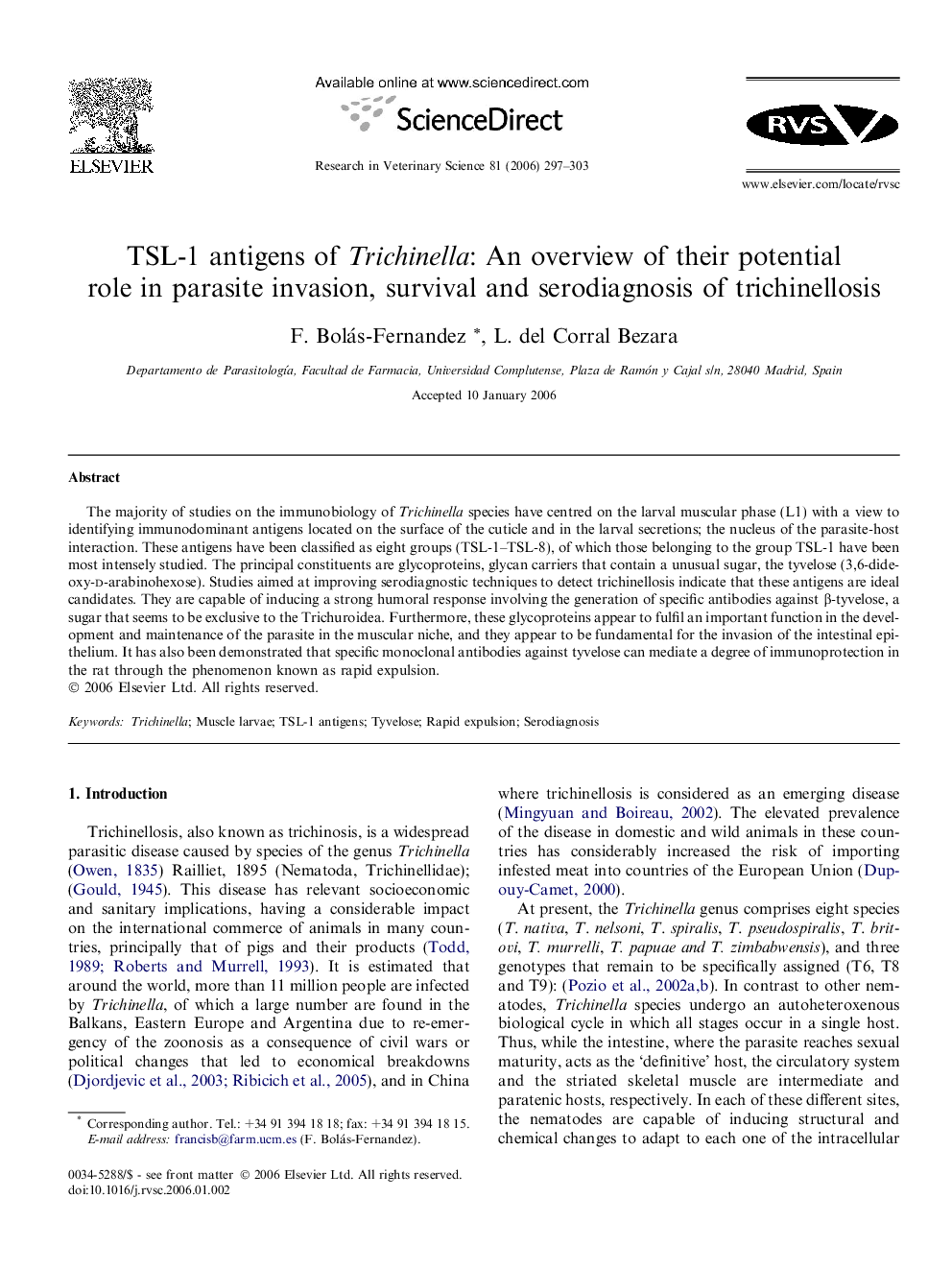| Article ID | Journal | Published Year | Pages | File Type |
|---|---|---|---|---|
| 2455918 | Research in Veterinary Science | 2006 | 7 Pages |
The majority of studies on the immunobiology of Trichinella species have centred on the larval muscular phase (L1) with a view to identifying immunodominant antigens located on the surface of the cuticle and in the larval secretions; the nucleus of the parasite-host interaction. These antigens have been classified as eight groups (TSL-1–TSL-8), of which those belonging to the group TSL-1 have been most intensely studied. The principal constituents are glycoproteins, glycan carriers that contain a unusual sugar, the tyvelose (3,6-dideoxy-d-arabinohexose). Studies aimed at improving serodiagnostic techniques to detect trichinellosis indicate that these antigens are ideal candidates. They are capable of inducing a strong humoral response involving the generation of specific antibodies against β-tyvelose, a sugar that seems to be exclusive to the Trichuroidea. Furthermore, these glycoproteins appear to fulfil an important function in the development and maintenance of the parasite in the muscular niche, and they appear to be fundamental for the invasion of the intestinal epithelium. It has also been demonstrated that specific monoclonal antibodies against tyvelose can mediate a degree of immunoprotection in the rat through the phenomenon known as rapid expulsion.
